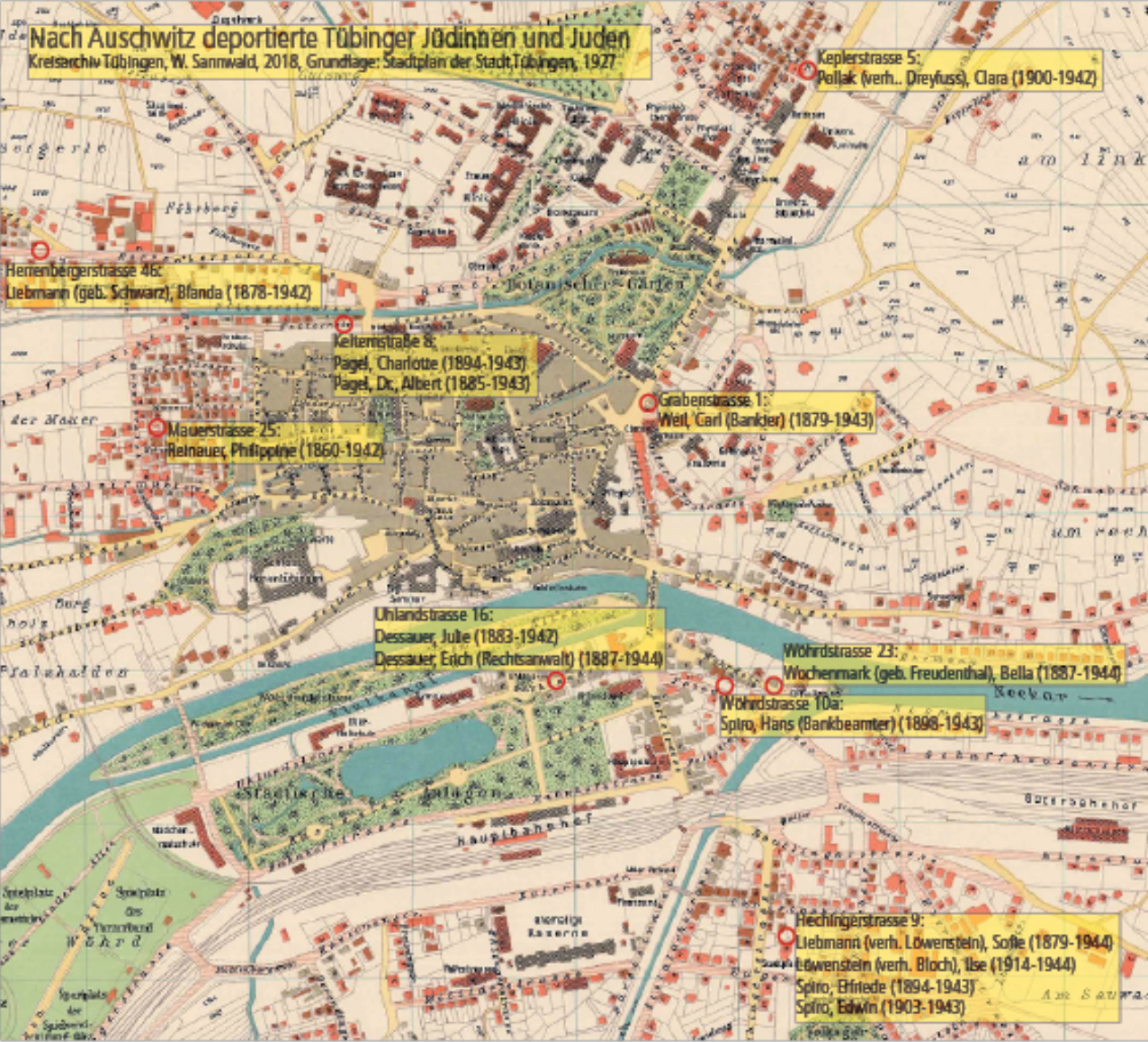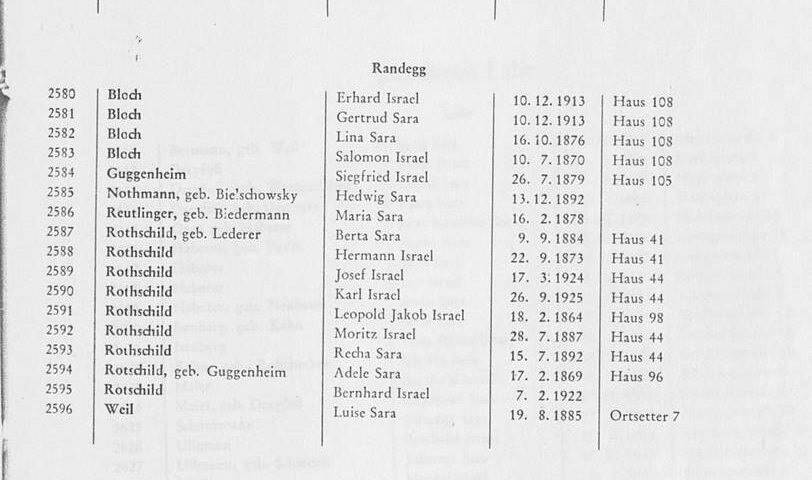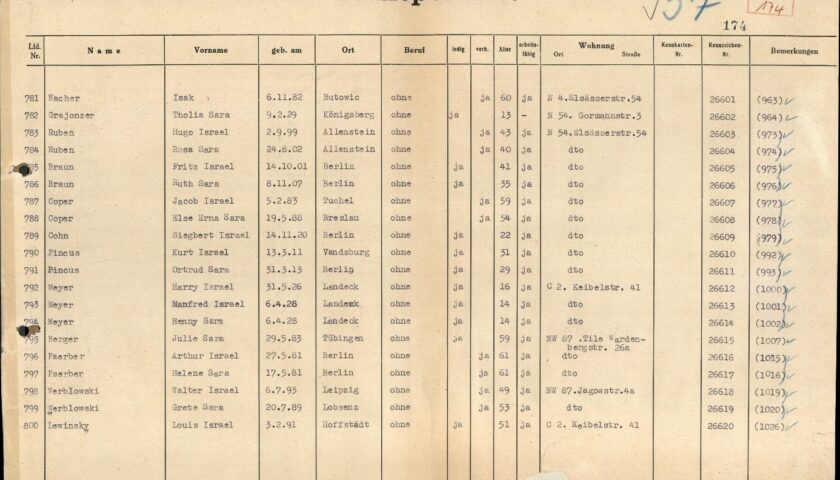The district archive of Tübingen has entered the residential addresses of people who were murdered in the Auschwitz extermination camp in the official city map of the university town of Tübingen from 1927. The deportation route of some of the 13 Tübingen residents mentioned here first led to a collection camp on the Killesberg in Stuttgart, from there by train to Theresienstadt. The camp there, in what is now the Czech Republic, was a hybrid between a ghetto, a concentration camp and a temporary camp. The latter form means that organs of the German Reich had people transported from Theresienstadt to the extermination camps in what is now Poland.
The places of residence in Tübingen were scattered throughout the city and tended to be found in the newer residential areas of the time. This is a clear indication that Jews in Tübingen before 1933 by no means lived in a ghetto situation. No Jewish family lived in the “Judengasse” behind the town hall in 1933; the street name is a reference to the Middle Ages.
Many Jews in Tübingen were integrated in the sense of today’s definitions. There were a disproportionate number of academics among them, there were also city councillors, some were involved in general social work. Some lived in houses in “better” residential areas. Proportionally, the same number of Jewish men had been soldiers in the First World War and died as such as non-Jewish Germans. Above all, the racist exclusion since 1933 fundamentally changed this situation.
Ev0 20200009 en




